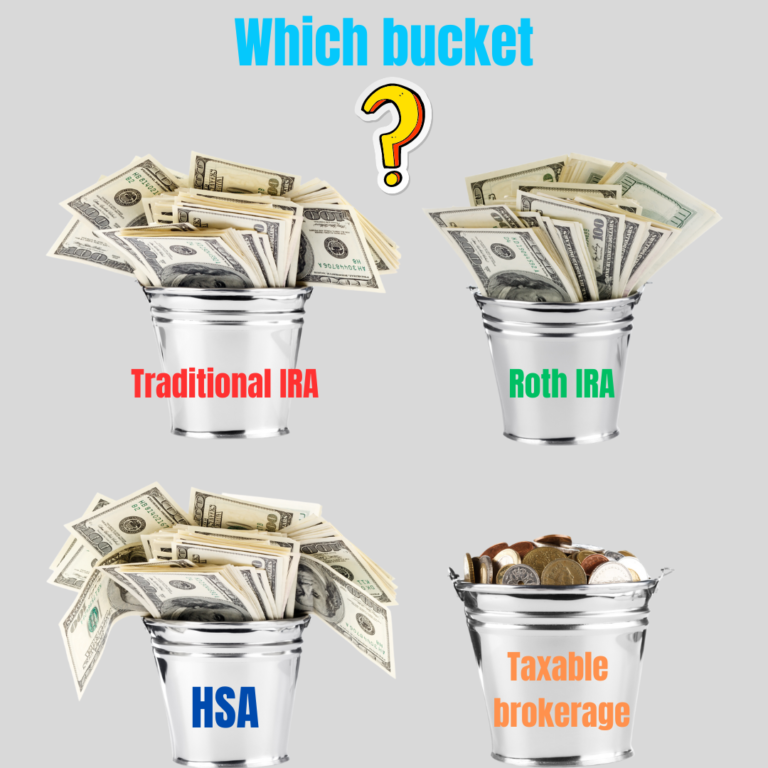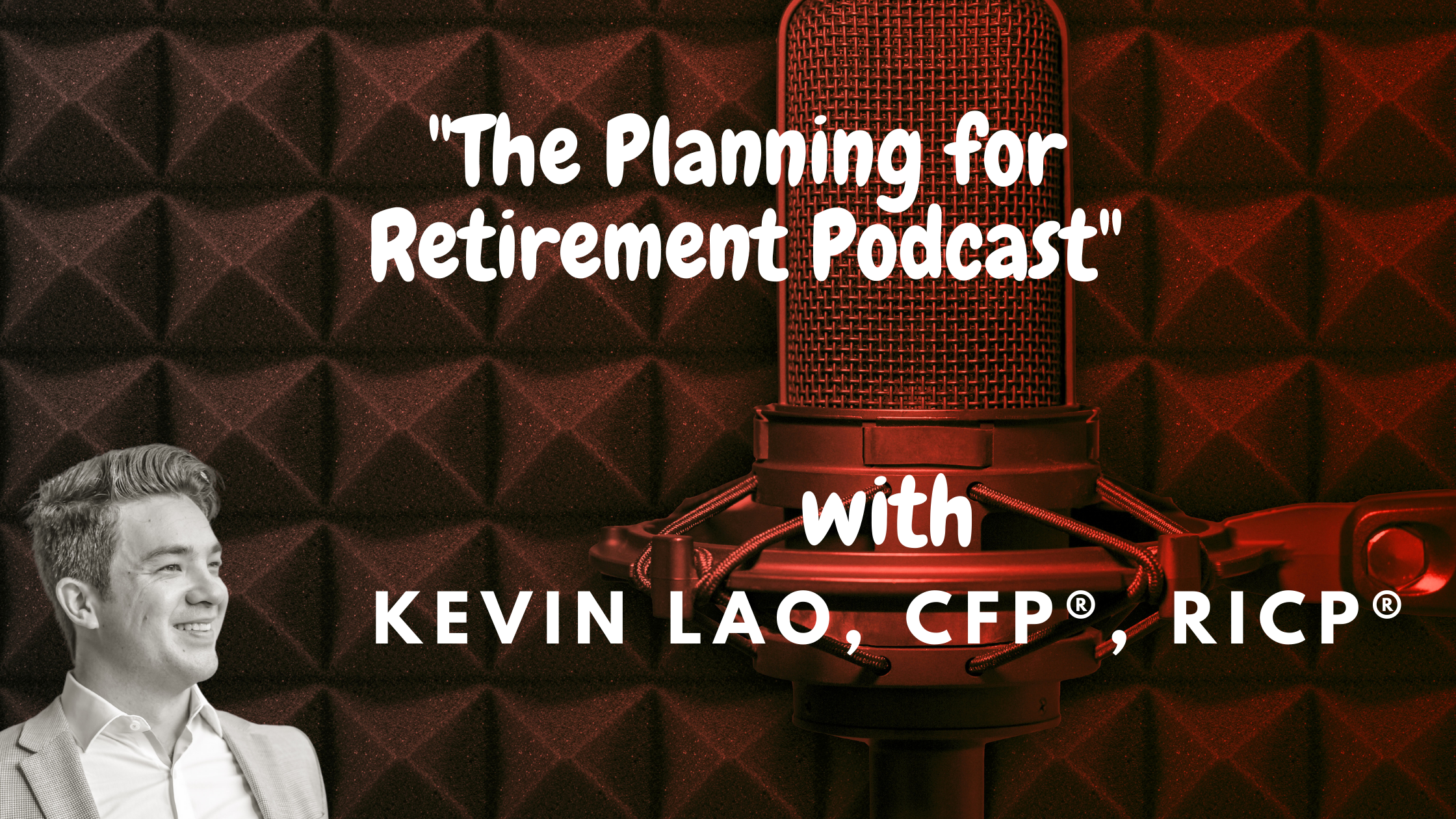I’ve known Cody for almost 3 years now, and this man is a true student of his craft. Cody is an advice-only financial planner passionate about helping DIY investors on the path to financial independence and through early retirement. He is a CFP practitioner and proud owner of the Measure Twice® brand.
His educational insights have been featured by Barron’s, Forbes, Fox Business, CNBC, Morning Brew, Business Insider, and MarketWatch. You can also hear him on the ChooseFI, The Long View (Morningstar), The Financial Independence Show, and Michael Kitces’ Financial Advisor Success podcasts.
Twitter: @MeasureTwiceMNY
LinkedIn: https://www.linkedin.com/in/codylgarrett/
Website: https://www.measuretwicemoney.com/
Cody brought up an interesting question that received a ton of engagement in the “Retirement Planning Education” Facebook group. The question was: “Is it easier to go from a spender to a saver, or a saver to a spender?” So naturally, we recorded a podcast about it!
In this episode, we will cover: – the topic itself – the poll results – the psychological shift from saving to spending in retirement – tactics to solve this behavioral challenge, and much more. I hope you enjoy this episode! -Kevin
For decades, the 60/40 portfolio has been the most popular asset allocation for retirees and institutional investors. It provides enough exposure to the equity markets to hedge inflation, but also plenty of “safe money” to offset dips in the stock market.
And then, 2022 – 2023 comes along when interest rates skyrocket sending the price of bonds into the red by -15%. The 60/40 portfolio failed for the first time in 40 years.
This begs the question, is the 60/40 portfolio dead?
In today’s episode, I talk about what the 60/40 portfolio is, how it’s performed over the last few decades, and then most importantly, I share 5 ways you can “modernize” the 60/40 portfolio to set yourself up for success in today’s economic landscape.
I hope you find it helpful and make sure to share this episode with a friend who is approaching retirement or has recently retired!
And don’t forget to follow me on Facebook @kevinlaocfp
-Kevin
Opposites attract, and this bleeds into the world of personal finance. There is a reason why the #1 cause for marital issues is related to personal finances. Well, when planning for retirement, this is no different. There’s oftentimes a “CFO” of the household, and a “Non-CFO.” It varies, depending on the couple, how much the “Non-CFO” is involved and/or interested in the personal finances. But either way, the concern is if the “Non-CFO” spouse had to take over the “CFO” role. As we get older, we realize we aren’t Superman or Superwoman. Then the question becomes, how do you equip the “Non-CFO” to minimize financial stress if and when they have to take over the “CFO” role? We’ll unpack all of this and more! I hope you find this episode to be helpful! -Kevin

Just because a financial advisor is technically a fiduciary, does it mean they are automatically superior to other financial advisors?
What is a fiduciary financial advisor in the first place?
Are fiduciaries always fiduciaries?
What are the limitations of a fiduciary financial advisor?
How do fiduciary financial advisors charge?
Let’s unpack the jargon and dive into what really matters when hiring a financial professional to assist with your financial goals.
How about a definition from good ole’ ChatGPT?!
“A fiduciary financial advisor is a financial professional who is legally and ethically obligated to act in the best interests of their clients. This means they are required to put their clients’ financial well-being ahead of their own profits or interests. The fiduciary duty is a higher standard of care than the suitability standard that some financial professionals adhere to.” – OpenAI
Overall, I’m okay with the definition! I might add that a fiduciary financial advisor also has the responsibility of ensuring the recommendations continue to be in the client’s best interests. Whereas the suitability standard only requires that the recommendation (or product) is “suitable” at the time of sale.
What happens when life changes? Or the markets change? Is your financial strategy still in your best interest?
A fiduciary financial advisor/planner would be required to ensure this is the case on an ongoing basis, as long as you are working with that individual or team.

Let’s first talk about how you will know if your financial advisor is a fiduciary.
The easiest way is to review their client engagement contracts. Here is a snippet from mine:
“IFS hereby accepts appointment and fiduciary duty of utmost good faith to act solely in the best interest of each Client pursuant to the terms and conditions set forth in this Agreement and to comply with impartial conduct standards.”
It’s pretty cut and dry. My firm is registered as an RIA, or Registered Investment Advisor. RIA’s are always fiduciaries, period.
However, some firms operate as a “hybrid.” This means they act on behalf of an RIA and a broker/dealer. This is where things become clear as mud.
A broker/dealer is a firm that sells products like insurance, annuities, mutual funds, or other investment products. These products pay commissions to the selling agent or broker. In this arrangement, the agent or broker is not a fiduciary, but oftentimes they put themselves out to be a fiduciary.
I’m not saying these products are all bad. However, much of the abuse in the financial services industry comes from the broker/dealer model. Have you heard the sales pitch for a life insurance policy with juiced-up cash value? Or the annuity that has upside potential with downside protection? In this model, your compensation is dependent on how much you sell, not on the quality of the advice you provide.
Here’s another confusing issue. The CFP Board (CERTIFIED FINANCIAL PLANNER), claims that CFPs act as fiduciaries. However, CFPs are not required to work for a Registered Investment Advisor. Many of them work for brokers or hybrid firms. This means you could say you are a fiduciary because you hold the CFP marks, but you may only act as a fiduciary “sometimes.”

Here is the other side of the coin. Because full-go fiduciaries don’t sell insurance and annuities, they often don’t understand how these products work. After all, the model of RIA firms is to charge advice fees, whether it be a % of assets under management or a flat fee. Herein lies the conflict of interest with the fiduciary financial advisor model!
I was having a conversation with another fee-only financial advisor at a conference recently about permanent life insurance. He was telling me about a case he’s dealing with where he recommended his client surrender a 10-year-old whole-life policy in exchange for term insurance. If you listened to episode 26 of our podcast, you know there are 7 reasons to own permanent life insurance in retirement!
I stayed curious and asked about the facts of the client. It turns out, this is a business owner with a large estate and is only in his 40s! There is a good chance he will be over the estate tax exemption by the time he passes away. Thus, permanent life insurance could be a great tool to help his beneficiaries pay the federal estate taxes without having to go through a fire sale of his business.
The other advisor was like a deer in headlights.
I don’t bring this up to poke fun at other advisors, I was very fortunate to have spent my first 12 years working for broker/dealer firms to get an understanding of how these products can fit.
However, many fee-only fiduciary financial advisors don’t have that luxury. Many of them started in the fee-only space. Or, they are career changers who were dissatisfied with the abuse from commission-based advisors and decided to become one themselves to make the industry better.
And believe me, the industry is in a much better place than it was when I first started in 2008!
With that being said, many clients who work with fee-only, fiduciary financial advisors may not get the advice they need when it comes to purchasing life insurance, long-term care insurance, and/or annuity products. And for the right client, these products are great fits!
This is the exact reason I’ve created a service offering for those who are interested in a comprehensive financial planning process that removes biases regarding buying insurance and annuities!

I dedicated an entire blog post to fees, and if you’re interested in diving deep, check out my article here.
To keep it simple for this post, fiduciary financial advisors can charge in three ways:
The % of assets model is by far the most popular, as many of the larger RIA’s have been operating in this arrangement for decades. But, there are inherent challenges to this model for my practice. First and foremost, many of my clients are in spending mode during retirement! They want honest opinions when it comes to paying off a mortgage, gifting to charity or maximizing their spending in retirement! I’ve heard some horror stories about AUM %-based advisors fighting clients to withdraw funds from other accounts instead of the ones they are managing. This is a big reason retirees are seeking flat-fee financial planners/advisors.
Additionally, as someone’s net worth grows, the complexity of their financial situation doesn’t necessarily grow in lockstep like the % of assets model would suggest. With the % of assets model, the larger the portfolio, the larger the fee.
For flat-fee financial advisors, oftentimes the fee is based on complexity, which isn’t solely predicated on how much of your investment portfolio is managed with that firm.
Furthermore, what if you want to purchase a rental property with some of your funds, or pay off your mortgage? Do you think you will get an unbiased viewpoint if your advisor’s fee goes down because of a large withdrawal from the portfolio?
And finally, you have hourly or project-based advisors. These advisors just give advice, they don’t touch your investment portfolio! This is a very important distinction as this is a great opportunity for advisors to add value to people who otherwise wouldn’t be able to hire an advisor.
Perhaps you are a business owner with all of your net worth tied up in your business.
Or, perhaps most of your funds are in a 401k plan at work.
Or, perhaps you are just getting started in your career and don’t have the asset size to hire a traditional “AUM” advisor.
Our firm also has a one-time engagement model where we can add a ton of value to someone who otherwise wouldn’t be able to receive customized advice. Oftentimes these clients turn out to be long-term ongoing relationships, but at least we can establish a solid foundation when they need it the most.
There is a lot to digest here, but just know that there is no right or wrong fee model! Furthermore, just because a financial advisor can say they are a fiduciary, doesn’t mean you should hire them!
Here are a few tips for those planning for retirement and looking to hire an advisor:
I hope this helps! If it did, make sure to subscribe to my newsletter below where I put out all of the retirement planning content in one consolidated email (monthly-ish).
Follow me on Instagram @imaginefinancialsecurity if you are a high-income Millennial or Gen X looking to achieve financial independence early!
Follow me on Facebook @kevinlaocfp if you are nearing retirement or recently retired and want education on traditional retirement planning.
If you are interested in learning more about how we can serve you, make sure to take our complimentary “Retirement Readiness Analysis” and we’ll reach out with our initial thoughts on how well you’re tracking towards your goal of financial independence. The cool thing is, you don’t need to share ANY financial statements or personally identifiable information to participate!
Thanks for reading!
In episode 26, we addressed 7 reasons you may want to own permanent life insurance during retirement.
In this episode, we will discuss the different types of permanent life insurance (whole and universal), as well as the different flavors of each type.
I hope you find this to be helpful! Drop us a line if you have questions or comments!
We’ve all heard the sales pitches! “Permanent life insurance solves all of your problems!”
For those of you who have followed me for a period of time know I don’t believe this to be true. But at the same time, there is a large % of the financial advisor (and talking heads) population that blanketly tells people, “Don’t ever buy permanent life insurance.”
To me, this is a breach of fiduciary duty. Just because we all have our biases doesn’t mean we should PUSH those biases on someone’s personal financial situation. As my friend Cody Garrett likes to say, “Keep Finance Personal.”
Here is a link to the article I referenced in the show about “How to divide assets in a blended family.”
Here’s a link to an episode from Andy Panko’s podcast;
Episode 77 – “Understanding cash value life insurance and how it’s sold, with Kevin Lao.”
This could be a nice compliment to what we discussed today!
I hope you enjoy it.
Make sure to give the show a follow and leave us a review so we can reach more people and make a bigger impact!
Kevin
These three statistics don’t add up to me!
1. 70% of Americans over 65 will need long-term care during their lives.
2. Fewer than half of you over the age of 65 own insurance to pay for long-term care. Essentially, you are planning to self-insure for long term care.
3. This is the crazy part. 70% of the care being provided is done by unpaid caregivers! Aka. family members…🤔
I wrote about long-term care planning before, but my convictions on this have only increased over the years.
In my previous article, I talked about considerations on whether or not you should purchase insurance.
We also just finished recording a three-part series on The Planning for Retirement Podcast (PFR) about how to fund long-term care costs. Episodes 22 and 23 were about using long-term care insurance and episode 24 was about how to self fund long-term care.
So why do these statistics bother me?
If the majority of retirees will need care, and they are intentionally not buying insurance, that means they plan to self fund for long term care (by default). However, why are family members providing the majority of long term care and not hired help!?
The answer: because there was no real plan to begin with. In reality, it was a decision that was never addressed, or perhaps in their mind they decided to “self fund.” However, that decision was never communicated to their loved ones.
Let me ask you. If you are in the majority that plans to self fund, what conversations have you had with your spouse? Your power(s) of attorney? Your trustee(s)? Do they know how much you’ve set aside if long term care was ever needed? Do they know which accounts they should “tap into” to pay for long-term care?
The chances are “no,” because I’ve never met a client who did this proactively on their own. Ever. And I’ve been doing this for 15 years.
So, this article is for you if you are planning to bypass the insurance route and use your own assets to “self fund long-term care.” I believe this is one of the most important decisions you can make when planning for retirement because it can save how you are remembered.

It is impossible to pinpoint the exact number YOU will need for care. But let’s pretend your long-term care need will fall within the range of averages.
On average, men need care 2.2 years and women 3.7 years.
The 2021 cost of care study by Genworth found that private room nursing homes cost $108,405/year. Assisted living facilities cost $54,000/year. These are national averages, and the cost of care varies drastically based on where you live.
So let’s use this ballpark figure of $118,800 – $238,491 for men, and $199,800 – $401,098 for women (2.2x the averages for men and 3.7x the averages for women).
The major flaw in using this math is that most people have some sort of guaranteed income flowing into their bank accounts.
Of course, not all of that income could be repurposed, especially if you are married. However, perhaps 25%, 50% or 75% of that income could be repurposed for caregivers.
Let’s say you are bringing in $100k/year between Social Security, Pension, and Required Minimum Distributions. Let’s say you are married, and all of a sudden need long term care. For simplicity’s sake, your spouse needs $50k for the household expenses. The other $50k could be repositioned to pay for long-term care. After all, if you need care, you probably are not traveling any longer, or golfing 5 days/week. This unused cash flow can now be dedicated to hiring professional help and protecting your spouse from mental and physical exhaustion.
If we assume the high-end range for men of $238,491, but we assume that $110,000 could come from cash flow (2.2 years x $50k of income), then only $128,491 of your assets need to be earmarked to self fund long term care.
Hopefully, that’s a helpful framework and reassurance that trying to come up with the perfect number is virtually impossible. After all, you may never need care. Or, perhaps you will need care for 5+ years because of Alzheimer’s.
My key point in this article is to address this challenge early (before you turn 60), and communicate your plan to your loved ones.

My personal favorite is the Health Savings Account, or HSA. I wrote in detail about HSA’s in another blog post that you can read here.
Here’s a brief summary:
What is a qualified healthcare cost?
Look up IRS publication 502 here, which is updated annually.
One of the categories for qualified healthcare costs is in fact long-term care! This means you can essentially have a triple tax-advantaged account that can be used to self insure long-term care in retirement.
However, you need to build this account up before you retire and go on Medicare. Medicare is not a high-deductible health plan!
But, if you have 5+ years to open and fund an HSA, it can be a great bucket to use in your retirement years, particularly long-term care costs.
The 2023 contribution limits are $7,750 if you are on a family plan and $3,850 if you are on a single plan. There is also a $1k/year catch-up for those over 55.
So, if you’re 55, you could add up to $43,750 in contributions for the next 5 years. If you add growth/compounding interest on top of this, you are looking at 6 figures + by the time you need the funds for care in your 80s. Not bad, right?
This bucket is another great option. Mostly because of the flexibility and the tax advantages of taking distributions. Unlike a 401k or IRA, these accounts have capital gains tax treatment. For most taxpayers that would be 15%, which could be lower than your ordinary income tax rate (it could also be as low as 0% and as high as 20%+).
If you are earmarking some of these dollars for care, I would highly recommend two things:
What’s nice about this bucket is that it’s not a “use it or lose it.” Just because you segregated some assets to pay for care, doesn’t mean those dollars have to be used for care. When these dollars pass on to the next generation, they should receive a step up in cost basis for your beneficiaries. If the dollars are in fact needed for care, you will only pay taxes on the realized gains in the portfolio.
🤔 Remember when we talked about tax loss harvesting in episode 19? Well, this strategy could also apply to help reduce the tax impact if this account is used to self-insure long-term care.
Of course, cash is cash. No taxes are due when you withdraw money from a savings account or a CD. Now, I wouldn’t suggest using a CD or cash to self-insure care, simply because it’s very likely that account won’t keep pace with inflation. However, if there is some excess cash in the bank when you need care, this could be a good first line of defense before the more tax-advantaged accounts are tapped into.
This bucket is often the largest account on the balance sheet when you are 55+. However, many advisors and financial talking heads recommend against tapping these accounts to self insure long term care because of the tax burden.
Well of course, it may not be ideal as a first line of defense to pay for care, but if it’s your only option, “it is what it is.”
But here’s the thing. If you are needing long term care, you’re most likely over the age of 80. This means you are already taking Required Minimum Distributions or RMDs. If you have a $1mm IRA, your RMD would be $62,500 at age 85. Let’s say you also have Social Security paying you $24,000/year. That’s a total income of $86,500 that is coming into the household to pay the bills. This was my point earlier in that you likely have income coming in that can be repurposed from discretionary expenses to hiring some professional help for care.
This means that you may not need to increase portfolio withdrawals by a huge number if RMDs are already coming out automatically.
But yes, you’ll have taxes due on these accounts based on your ordinary income rates. And yes, if you increase withdrawals from this bucket, this could put you in a position where your tax brackets go up, or your Social Security income is taxed at a higher rate, or perhaps will have Medicare surcharges.
On the flip side, this could also trigger the ability to itemize your deductions due to increased healthcare costs. In fact, any healthcare costs (including long term care) that exceed 7.5% of your adjusted gross income could be counted as a tax deduction (as of 2023).
The net effect essentially could be quite negligible as those additional portfolio withdrawals could be offset with tax deductions, where applicable.
Maybe you bought a life insurance policy back in the day that you held onto. Or you purchased an annuity to provide a guaranteed return or guaranteed income. However, you may find that your goals and circumstances change throughout retirement. Perhaps your kids are making a heck of a lot more money than you ever did, so they don’t have a big need for an inheritance. Or, that annuity you purchased wasn’t really what you thought it was. You could look at these accounts as potential vehicles to self-insure for long term care.
Life Insurance could have two components – a living benefit (cash value) and a death benefit. In this case, you could use either or as the funding mechanism for long term care.
Let’s say you have $150k in cash value and a $500k death benefit. Instead of tapping into your retirement accounts or brokerage accounts, you could look at borrowing or surrendering your life insurance cash value to pay for care. Or, you could look at the death benefit as a way to “replenish” assets that were used to pay for care.
Annuities could be tapped into by turning the account into a life income, an income for a set period of time, or as a lump sum. All of those options could be considered when it comes to raising cash for this type of emergency.
This is the second most tax-efficient retirement vehicle behind the HSA. It’s not only a great retirement income tool, but it’s also a great tool to use for financial legacy given the tax-free nature from an estate planning perspective. However, this account could be used to self insure long term care without triggering tax consequences.
Let’s say you need another $30k for the year to pay for care. But an additional $30k withdrawal from your traditional 401k would bump you into the next tax bracket. Instead, you could look to tap into the Roth accounts in order to keep your tax bracket level.

The largest asset for most people in the US is their home equity. However, people rarely think of this as a way to self insure long term care. In fact, this is why many caregivers are family members! They want their loved ones to stay at home instead of moving into a nursing home. But perhaps there isn’t a huge nest egg to pay for care. If you have home equity, you could tap into that asset via a reverse mortgage, a cash-out refinance, or a HELOC. There are pros and cons of each of these, but the reverse mortgage (or HECM) is a great tool if you are over the age of 62 and need access to your equity.
The payments come out tax-free, the loan doesn’t need to be repaid (unless the occupant moves, sells, or dies), and there are protections if the value of the home is underwater.
Now that you have a decent understanding of how much to set aside and which accounts might be viable for you, it’s time to have a family meeting.
If you’re married, have a conversation with your spouse.
If you have children, bring them into the discussion, especially those that will have a key decision-making role (powers of attorney, trustee etc).
You know your family dynamic best. The point you need to get across is that you do have a plan to self insure long term care despite not owning long term care insurance. Your loved ones need to know how much they could tap into (especially the spouse) in the event you need care. This is very important, give your spouse permission to spend! Being a caregiver, especially a senior woman, will very likely result in burnout, stress, physical deterioration, mental exhaustion, and resentment. If you simply leave it to your spouse to “figure out,” they will always resort to doing it themselves in fear of overspending on care.
❌ Don’t do this to them!
I hope you found this helpful! Make sure to subscribe to our newsletter below so you don’t miss any of our retirement planning content! Until next time, thanks for reading!
I hope you enjoy this one! I am not going to give it away in the description but here are the most common responses I hear from people (until they listen to this episode of course): – Tax planning – Peace of mind – Investment management – Income distribution planning – Estate planning All good answers, but all of them are wrong! Here are a few links I referenced during this episode, check them out below:
WSJ Article – Retirement Regrets
Investment News – Why people are reluctant to hire an advisor
Most people go into retirement without Long-term Care Insurance. Meaning, they plan to “self-fund” Long-term Care expenses. But really, what ends up happening is that a family member, or family members, will end up providing the care.
In fact, 70% of care provided is done by unpaid caregivers (aka family members).
This goes against what most people’s primary goal is in retirement; “Never to be a burden on their loved ones.”
The problem is the “self-funding” plan wasn’t communicated properly to their loved ones. Or, there was no “self-funding” plan to begin with.
In this episode, we’ll dive into the different assets you could tap into during retirement to “self-fund” long-term care costs, and tips and tricks on how to implement your plan while maintaining your dignity (at home!).
Here are a few links referenced in the show:
Publication 502 (IRS)– Qualified Medical Expenses
I hope you enjoy this episode.
This is part 2 of 3 in our series, “How to pay for Long-term care costs in retirement.”
Rodney Mogen and Peter Ciravalo from BC Brokerage are my guests again today and they bring a ton of knowledge on this topic! There is a reason Hybrid Long-term Care policies make up the majority of insurance products sold today. However, because there are so many different types of products and how they fit into a client’s situation, oftentimes retirees and pre-retirees can feel overwhelmed with where to start.
I hope you enjoy this episode and make sure to hit “FOLLOW” so you don’t miss out on part 3, “How to self-fund extended care costs in retirement.”
Here is how to get in touch with BC Brokerage!
Copyright © 2020 imagine financial security. All Rights Reserved. Website by Justin Bordeaux

